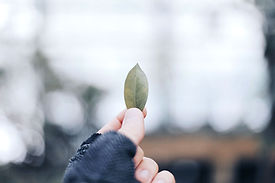
'the restraint of the modifications of the mind-stuff is yoga'
-pantanjali
what is yoga?
Yoga is controlling mind turbulence into a flow state of peace, according to the great yogic sage, Pantanjali.
During challenging yogic poses, mind turbulence can arise. With opportunity to curiously observe, a choice can be made to action a different pattern of thought, that cultivates peace. Yoga is like a mirror in this way, igniting self-development.

8 limbs
ashtanga yoga
'A traditional philosophy of yoga, Ashtanga, has 8 teachings, ' 8 limbs'. Each is a process of curious self exploration, yoga poses are the 3rd limb...
Sutras', are described in each limb by Pantanjali. The Yoga Sutra's are a classical text relevant to modern life today.
'Sutra' in sanskrit means 'stitches', which can inspire meaningful progression in the fabric of life.
Sanskrit is an ancient and sacred language, it's pronunciation creates intention and form.
The 8 limbs can be instructed in disciplined order or intuitively ordered with individual growth.

1. yama
An exploration of ethical integrity and what that means to you
2. niyama
Internalising, developing self-awareness and self-discipline to grow
3. asana
Physical practise, conditioning the body in reflection of the mind
4. pranayama
Breath exercises, controlling mind energy with prana (life force)
5. pratyahara
Creating space from external stimuli to observe self in relation to external influences
6. dharana
Practising single-point concentration and observing internal distractions
7. dhyana
Uninterrupted concentration that leads to meditation, a state of flow in a still mind
8. samadhi
A feeling of inner peace that prevails meditation, a feeling of oneness

yoga asana,
preparing the body to meditate
Self-practise guide
rolled the mat out and unsure what to do next?
-
begin with a mindful moment
-
sun salutations to warm the body
-
asanas to safely build strength/flexibility (standed, seated, arm balances, then inversions)
-
savasana (relaxation) to absorb the practise
-
finish with an internal moment of reflection or gratitude
Free meditation flows
YouTube @RosettaYoga
Pranayama
snapped in India
